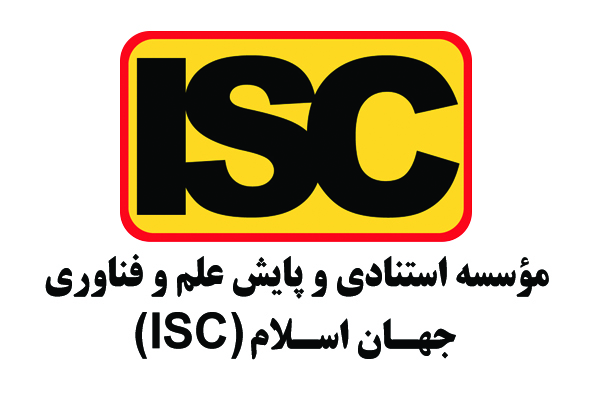Adoption and Implementation of Emerging Technologies in SMEs: Insights from Semi-Structured Interviews with Founders
کلمات کلیدی:
Emerging technologies, SMEs, technology adoption, operational efficiency, competitive advantage, innovation, financial constraints, employee trainingچکیده
This study aims to explore the adoption and implementation of emerging technologies in Small and Medium-sized Enterprises (SMEs). By understanding the motivations, challenges, benefits, and future plans of SME founders, this research provides insights into how these businesses leverage technology to enhance their competitiveness and operational efficiency. The study employed a qualitative research design, utilizing semi-structured interviews with 25 founders of SMEs across various industries. Participants were selected using purposive sampling to ensure diverse representation. Data collection continued until theoretical saturation was achieved. The interview data were transcribed and analyzed using NVivo software, following a thematic approach to identify key themes and insights related to technology adoption and implementation in SMEs. The study identified several motivations for technology adoption, including competitive advantage, cost efficiency, customer demand, innovation drive, and growth opportunities. Key challenges faced by SMEs included financial constraints, technical difficulties, resistance to change, regulatory and compliance issues, knowledge gaps, vendor dependence, and time constraints. The benefits realized from technology adoption encompassed improved operational efficiency, enhanced customer satisfaction, revenue growth, better data analytics, increased employee productivity, and greater market adaptability. Future plans of SMEs included continued investment in technology, scaling up implementation, focusing on employee training and development, forming strategic partnerships, enhancing cybersecurity measures, and improving customer engagement. The adoption and implementation of emerging technologies present significant opportunities for SMEs to enhance their competitiveness and operational efficiency. However, SMEs must navigate various challenges to realize these benefits. By adopting a strategic approach and leveraging external partnerships, SMEs can successfully implement new technologies and drive sustainable growth. This study provides valuable insights into the experiences of SME founders, informing both practice and policy in the context of technological advancement in small and medium-sized enterprises.
دانلودها
مراجع
Akpan, I. J., Udoh, E., & Adebisi, B. (2020). Small Business Awareness and Adoption of State-of-the-Art Technologies in Emerging and Developing Markets, and Lessons From the COVID-19 Pandemic. Journal of Small Business & Entrepreneurship, 34(2), 123-140. https://doi.org/10.1080/08276331.2020.1820185
Caldeira, M. M., & Ward, J. M. (2003). Using Resource-Based Theory to Interpret the Successful Adoption and Use of Information Systems and Technology in Manufacturing Small and Medium-Sized Enterprises. European Journal of Information Systems, 12(2), 127-141. https://doi.org/10.1057/palgrave.ejis.3000454
Elshaer, I. A., Azazz, Alaa M. S, Fayyad, Sameh. (2023). Green Human Resources and Innovative Performance in Smalland Medium-Sized Tourism Enterprises: A Mediation Model Using PLS-SEM Data Analysis. Mathematics, 11(3),711. https://doi.org/10.3390/math11030711
Harris, M. L., & Patten, K. (2014). Mobile Device Security Considerations for Small- And Medium-Sized Enterprise Business Mobility. Information Management & Computer Security, 22(1), 97-114. https://doi.org/10.1108/imcs-03-2013-0019
Hoang, T. G., & Bui, M. L. (2023). Business intelligence and analytic (BIA) stage-of-practice in micro-, small- and medium-sized enterprises (MSMEs). Journal of Enterprise Information Management, 36(4), 1080-1104.https://doi.org/10.1108/JEIM-01-2022-0037
Hwang, W. S., & Kim, H. S. (2021). Does the Adoption of Emerging Technologies Improve Technical Efficiency? Evidence From Korean Manufacturing SMEs. Small Business Economics, 59(2), 627-643.https://doi.org/10.1007/s11187-021-00554-w
Karimi, M., Sanavifard, R., & Hamidizadeh, A. (2022). Investigating the impact of digital technology on the environment and marketing capabilities of small and medium enterprises. Quarterly journal of Industrial Technology Development, 20(50), 3-16. https://doi.org/10.22034/jtd.2022.253284
Kim, C., Park, S.-H., & Seol, B.-M. (2018). The role of universities for the change of a network structure in the regional business ecosystem. Asia Pacific Journal of Innovation and Entrepreneurship, 12(1), 77-89.https://doi.org/10.1108/APJIE-04-2018-044
Maden-Eyiusta, C., & Alten, O. (2023). Expansion-oriented job crafting and employee performance: A selfempowerment perspective. European Management Journal, 41(1), 79-89. https://doi.org/10.1016/j.emj.2021.10.012
Mbima, D., & Tetteh, F. K. (2023). Effect of business intelligence on operational performance: the mediating role of supply chain ambidexterity. Modern Supply Chain Research and Applications, 5(1), 28-49.https://doi.org/10.1108/MSCRA-08-2022-0020
Miri Rami, S. F., Delgoshaei, Y., & Mahmoudi, A. H. (2022). Identification and Analysis of Effective Factors on the Strategic Intelligence of Education Districts Managers of Tehran City and Provide an Appropriate Model [Research Article]. Iranian Journal of Educational Sociology, 5(1), 113-125. https://doi.org/10.61186/ijes.5.1.113
Muridzi, G. (2024). Uptake of Internet of Things by SMEs in Digital Era in Emerging Economies: A Systematic Literature Review. International Journal of Research in Business and Social Science (2147-4478), 13(1), 38-46.https://doi.org/10.20525/ijrbs.v13i1.2937
Nair, J., Chellasamy, A., & Singh, B. (2019). Readiness Factors for Information Technology Adoption in SMEs: Testing an Exploratory Model in an Indian Context. Journal of Asia Business Studies, 13(4), 694-718.https://doi.org/10.1108/jabs-09-2018-0254
Okundaye, K. E., Fan, S. K., & Dwyer, R. J. (2019). Impact of Information and Communication Technology in Nigerian Small-to Medium-Sized Enterprises. Journal of Economics Finance and Administrative Science, 24(47), 29-46.https://doi.org/10.1108/jefas-08-2018-0086
Petruzzelli, A. M., Murgia, G., & Parmentola, A. (2021). How Can Open Innovation Support SMEs in the Adoption of I4.0 Technologies? An Empirical Analysis. R and D Management, 52(4), 615-632.https://doi.org/10.1111/radm.12507
Rahman, R. U., Shah, S. M. A., El-Gohary, H., Abbas, M., Khalil, S. H., Altheeb, S. A., & Sultan, F. (2020). Social Media Adoption and Financial Sustainability: Learned Lessons From Developing Countries. Sustainability, 12(24),10616. https://doi.org/10.3390/su122410616
Taylor, M., & Murphy, A. (2004). SMEs and E‐business. Journal of Small Business and Enterprise Development, 11(3), 280-289. https://doi.org/10.1108/14626000410551546












